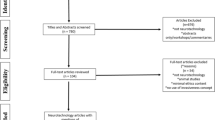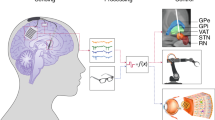Abstract
Wireless powered implants, each smaller than a grain of rice, have the potential to scan and stimulate brain cells. Further research may lead to next-generation brain-machine interfaces for controlling prosthetics, exoskeletons, and robots, as well as “electroceuticals” to treat disorders of the brain and body. In conditions that can be particularly alleviated with brain stimulation, the use of such mini devices may pose certain challenges. Health professionals are becoming increasingly more accountable in decision-making processes that have impacts on the life quality of individuals. It is possible to transmit such stimulation using remote control principles. Perhaps, the most important concern regarding the use of these devices termed as “neural dust” is represented by the possibility of controlling affection and other mental functions via waves reaching the brain using more advanced versions of such devices. This will not only violate the respect for authority principle of ethics, but also medical ethics, and may potentially lead to certain incidents of varying vehemence that may be considered illegal. Therefore, a sound knowledge and implementation of ethical principles is becoming a more important issue on the part of healthcare professionals. In both the ethical decision-making process and in ethical conflicts, it may be useful to re-appraise the principles of medical ethics. In this article, the ethical considerations of these devices are discussed.
Similar content being viewed by others
References
Perlmutter JS, Mink JW (2006) Deep brain stimulation. Annu Rev Neurosci 29(2):229–257. https://doi.org/10.1146/annurev.neuro.29.051605.112824
Suthana N, Haneef Z, Stern J, Mukamel R, Behnke E, Knowlton B, Fried I (2012) Memory enhancement and deep-brain stimulation of the entorhinal area. N Engl J Med 366(6):502–510. https://doi.org/10.1056/NEJMoa 1107212
Boston Retinal Implant Project (BRIP) home page. http://www.bostonretinalimplant.org Accessed 14 February, 2017.
Hansson SO (2005) Implant ethics. J Med Ethics 31(9):519–525. https://doi.org/10.1136/jme.2004009803
Cogan SF (2008) Neural stimulation and recording electrodes. Annu Rev Biomed Eng 10(2):275–309. https://doi.org/10.1146/annurev.bioeng.10.061807.160518
Cramer SC, Sur M, Dobkin BH, O'Brien C, Sanger TD, Trojanowski JQ, Rumsey JM, Hicks R, Cameron J, Chen D, Chen WG, Cohen LG, deCharms C, Duffy CJ, Eden GF, Fetz EE, Filart R, Freund M, Grant SJ, Haber S, Kalivas PW, Kolb B, Kramer AF, Lynch M, Mayberg HS, McQuillen PS, Nitkin R, Pascual-Leone A, Reuter-Lorenz P, Schiff N, Sharma A, Shekim L, Stryker M, Sullivan EV, Vinogradov S Harnessing neuroplasticity for clinical applications. Brain 134(6):1591–1609. https://doi.org/10.1093/brain/awr039
Chen R, Canales A, Anikeeva P (2017) Neural recording and modulation technologies. Nat Rev/Mater 2(16093):1–16
Hanlon M (2016) Brain implant enables paralyzed woman to communicate by thought. http://newatlas.com/utrecht-mind-machine-interface/46475/. Accessed February, 10 2017
Shen H (2013) News in focus—US brain project puts focus on ethics. Nature 500(7462):261–262. https://doi.org/10.1038/500261a
Paulus W (2011) Transcranial electrical stimulation (tES–tDCS; tRNS, tACS) methods. Neuropsychol Rehabil 21(5):602–617. https://doi.org/10.1080/09602011.2011.557292
Ramirez S, Liu X, Lin PA, Suh J, Pignatelli M, Redondo RL, Ryan TJ, Tonegawa S (2013) Creating a false memory in the hippocampus. Science 341(6144):387–391. https://doi.org/10.1126/science.1239073
Han W, Tellez LA, Rangel MJ Jr, Motta SC, Zhang X, Perez IO, Canteras NS, Shammah-Lagnado SJ, van den Pol AN, de Araujo IE (2017) Integrated control of predatory hunting by the central nucleus of the amygdala. Cell 168(1–2):311–324 e318. https://doi.org/10.1016/j.cell.2016.12.027
The Boston Retinal Implant Project (BRIP). http://www.bostonretinalimplant.org/ Accessed February, 14 2017.
Sanders R (2016) Sprinkling of neural dust opens door to electroceuticals. https://news.berkeley.edu/2016/08/03/sprinkling-of-neural-dust-opens-door-to-electroceuticals/. Accessed February, 10 2017
Choi CQ (2016) Wireless “Neural Dust” could monitor your brain. Sand-sized sensor implants give instant feedback from nerve cells. Popular Sci. https://www.popsci.com/tiny-wireless-implants-could-monitor-your-brain . Accessed February, 20 2017
Seo D, Carmena JM, Rabaey JM, Alon E, Maharbiz MM (2013) Neural dust: an ultrasonic, low power solution for chronic brain-machine interfaces. http://arxiv.org/pdf/1307.2196v1.pdf. Accessed February, 10 2017
West N (2013) Mind control scientists find new memory manipulation technology. http://www.activistpost.com/2013/07/mind-control-scientists-successfully.html. Accessed February, 10 2017
Beauchamp TL, Childress JF (2012) Principles of biomedical ethics, 7th edn. Oxford University Press, London
Gerlai R (2003) Memory enhancement: the progress and our fears. Genes Brain Behav 2(2):187–190. https://doi.org/10.1034/j.1601-183X.2003.00019.
Maguire GQ, McGee EM (1999) Implantable brain chips? Time for debate. Hast Cent Rep 29(1):7–13. https://doi.org/10.2307/3528533.
Roskies A (2002) Neuroethics for the new millennium. Neuron 35(1):21–23. https://doi.org/10.1016/S0896-6273(02)00763-8
Wolpe PR (2000) Treatment, enhancement, and the ethics of neurotherapeutics. Brain Cogn 50(4):387–395. https://doi.org/10.1016/S0278-2626(02)00534-1.
Giordano J. Neurotechnological progress: the need for neuroethics. https://www.bbvaopenmind.com/wp-content/uploads/2017/01/BBVA-OpenMind-James-Giordano-Neurotechnological-Progress-The-Need-for-Neuroethics.pdf Accessed March 12, 2017
Dodds S (1996) Exercising restraint: autonomy, welfare and elderly patients. J Med Ethics 22(3):160–163. https://doi.org/10.1136/jme.22.3.160
Altmann J (2009) Preventive arms control for uninhabited military vehicles. In: Capurro R, Nagenborg M (eds) Ethics and robotics. AKA Verlag, Heidelberg
Strout J. Mind uploading home page. http://ibiblio.org/jstrout/uploading/MUHomePage.html Accessed March 4, 2017
White RJ (1999) Brain chip: postpone the debate. Hast Cent Rep 29(6):4. https://doi.org/10.2307/3527863
Amanda Martin A, Becker K, Darragh M, Giordano J (2016) A four-part working bibliography of neuroethics: part 3—“second tradition neuroethics”—ethical issues in neuroscience. Philosophy Ethics Humanities Med 11(1):7–62. https://doi.org/10.1186/s13010-016-0037-1.
Marcus G, Koch C. The future of brain implants http://www.theaustralian.com.au/business/wall-street-journal/the-future-of-brain-implants/news-story/0721c077d78177ae56e04c823bbaba8c. Accessed February 23, 2017
Swan M (2016) The future of brain-computer interfaces: blockchaining your way into a cloudmind. J Evol Technol 26 Issue 2 – October 2016. http://jetpress.org/v26.2/swan.htm Accessed March 2, 2017
Tomasik B (2011) Risks of astronomical future suffering. Foundational Research Institute (Last update: 26 Aug 2017) http://foundationalresearchorg/publications/risks-of-astronomical-future-suffering/. Accessed August 28, 2017
Marchesano J, Brenner S (2010) Nanotechnology in biology: understanding future ethical dilemmas from past technologies. Ethics Biol Eng Med (EBEM) 1(4):247–258. https://doi.org/10.1615/EthicsBiologyEngMed.v1.i4.10
Author information
Authors and Affiliations
Corresponding author
Ethics declarations
This article does not contain any studies with human participants or animals performed by any of the authors.
Conflict of interest
The authors declare that they have no conflict of interest.
Rights and permissions
About this article
Cite this article
Keskinbora, K.H., Keskinbora, K. Ethical considerations on novel neuronal interfaces. Neurol Sci 39, 607–613 (2018). https://doi.org/10.1007/s10072-017-3209-x
Received:
Accepted:
Published:
Issue Date:
DOI: https://doi.org/10.1007/s10072-017-3209-x




